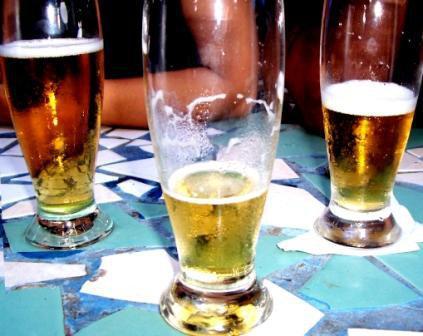Backdoor Prohibition? The Road to 0.05
 By Attorney Steven C. McGaver
By Attorney Steven C. McGaver
Recently, the National Transportation Safety Board recommended that all fifty states should lower the legal blood alcohol limit from 0.08 g/100 ml to 0.05 g/100 ml. According to the NTSB, at .05 BAC, some drivers begin having difficulties with depth perception and other visual functions. As expected, the American Beverage Institute immediately cried foul. Managing director Sarah Longwell said: "This recommendation is ludicrous. Moving from 0.08 to 0.05 would criminalize perfectly responsible behavior. Further restricting the moderate consumption of alcohol by responsible adults prior to driving does nothing to stop hardcore drunk drivers from getting behind the wheel." The proposal also met criticism from some surprising opponents, Mothers Against Drunk Driving of Texas, which successfully lobbied to change the limit from .10 to .08 in 1999, said pushing to lower the rate is not on its radar, and according to the Milwaukee Journal Sentinel, Milwaukee County Sheriff, David Clarke expressed his opposition to the proposal, stating, "What we're seeing from analysis of our data is that the heart of the problem is that Wisconsin doesn't criminalize the first offense. The first offense of drunken driving should be a misdemeanor. On average, many of those arrested have a level of 0.15, or nearly twice the legal limit, and some are even higher. People we stop, test and arrest are drunk out of their minds. There's nothing in the NTSB recommendations that talks about stiffer sentences, and that's what's needed. Our problem is multiple-time offenders, and we don't send a strong enough message after the first time."
The New York Times reported that "Blood-alcohol concentration varies by body weight, gender, stomach contents and other factors, but generally speaking, a 180-pound man could consume four beers or glasses of wine in 90 minutes without reaching the current limit. At a limit of 0.05 percent, he could legally consume only three. A 130-pound woman could probably consume three drinks in 90 minutes and be legal under the existing standard; if the limit were lowered, she could consume only two."
Perhaps the better approach to reducing drunk driving is offering a carrot, instead of threatening a stick. Municipalities may need to rethink parking regulations that prevent parking on city streets from 2a.m.--4a.m. Perhaps public funds should be used increase the number of taxi cabs, buses, and other forms of public transit so tavern patrons have a way to get home without resorting to their cars. Most local bus services shut down well before bar close and the cab companies are so swamped, it could take more than an hour to get a cab. Making it more convenient for people to act responsibly seems a better alternative to penalizing social drinkers with DUIs and jail time.







